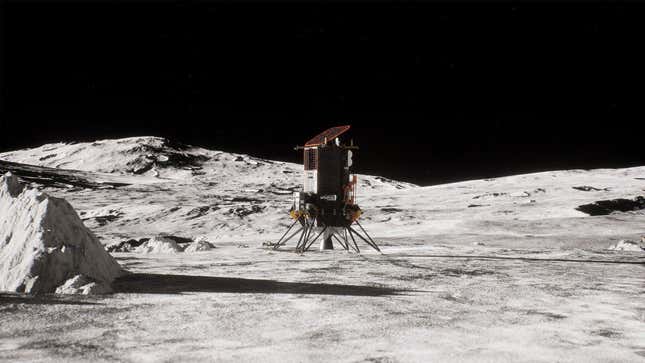
Nokia announced it is sending a 4G internet service to the Moon during an upcoming space mission. The company says the technology will hopefully pave the way for more lunar discoveries and create opportunities for a human presence on the Moon and beyond.
The system is expected to be deployed during Intuitive Machines’s upcoming IM-2 mission, which is currently scheduled to launch in November aboard a SpaceX Falcon 9 rocket. Intuitive Machines’s Nova-C lunar lander will take the system and other payloads to our natural satellite, bringing Nokia’s 4G communications system to its final destination on the Shackleton crater in the southern region of the Moon, CNBC reports.
Nokia, working alongside Lunar Outpost and Intuitive Machines, created the 4G technology, which is designed to withstand the harsh conditions in space. The tech demonstration could set the stage for use during future crewed Artemis missions to the Moon. The current plan is for NASA to land two astronauts on the lunar surface in 2025, marking the first time astronauts will walk on the Moon since the 1972 Apollo 17 mission.
Anshel Sag, the principal analyst at Moor Insights & Strategy, told CNBC that 2023 was an “optimistic target” for Nokia to launch the 4G network, adding: “If the hardware is ready and validated as it seems to be, there is a good chance they could launch in 2023 as long as their launch partner of choice doesn’t have any setbacks or delays.”
Nokia announced the project in 2020 when it was selected by NASA and its Bell labs were granted $14.1 million to fund the project, CNN reported at the time. Nokia said in the blog post that it will initially test the lander’s short and long-range communication capabilities at proximities ranging from a few hundred meters to between two and three kilometers away. The network will be critical for “any sustained human presence on the Moon and Mars in the future,” Nokia said in a blog post.
“It became evident to us that, for any sustained human presence on the Moon and Mars in the future, connectivity, and communications are critical,” Thierry Klein, head of the enterprise and industrial automation research lab at Nokia Bell Labs said in the post. He added that it is imperative for astronauts to have the same access to technology as they do on Earth to run their applications and support their activities in space. Ideally, astronauts will use the 4G internet during the Artemis 3 mission to enhance “voice and video communications capabilities, telemetry and biometric data exchange, sensing applications, or controlling robotics.”
Nokia did not immediately respond to Gizmodo’s request for comment.
The company hopes to assist with further explorations and experiments to find ice on the Moon that could provide breathable oxygen for astronauts, drinkable water, and rocket fuel. Although the Moon’s surface is dry, uncrewed missions have signaled remnants of ice in some of the Moon’s sheltered craters.
Klein said in a press release late last month that Nokia and Bell Labs are looking forward to bringing the technology to space in the coming year. He said the 4G network “will have a big impact on future crewed missions to the Moon and beyond, and validate that cellular technologies can be adapted for mission-critical space communications needs. Instead of reinventing the wheel by creating a proprietary network in space, we are leveraging the same technology that connects billions of devices cost-effectively on Earth.”
For more spaceflight in your life, follow us on Twitter and bookmark Gizmodo’s dedicated Spaceflight page.
Nokia Is Sending 4G Internet to the Moon - Gizmodo
Read More

No comments:
Post a Comment